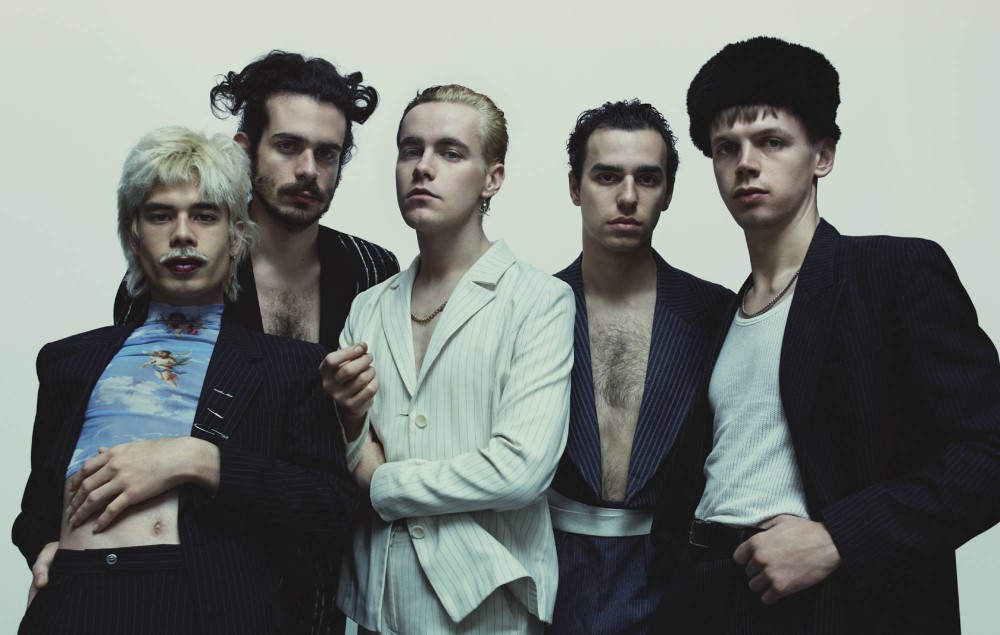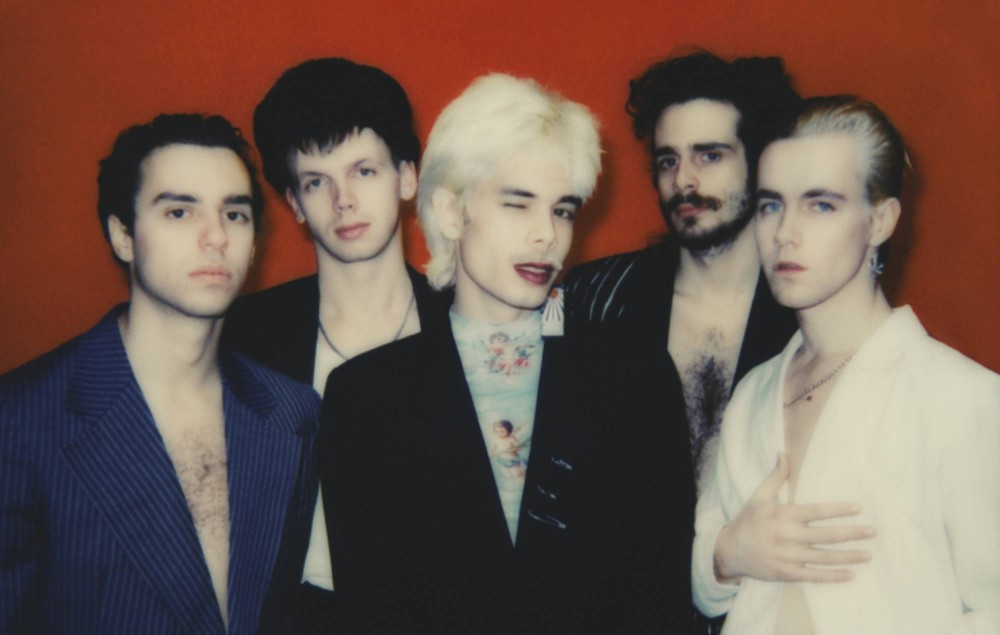HMLTD on ‘Leaving’ – the first “ever-evolving song” with layers to be sold as NFTs
HMLTD have unveiled details of an ambitious project, announcing the first “ever-evolving song” with the different elements that control it to be auctioned as NFTs. Check the exclusive trailer for the project below, along with our interview with the band.
With each thread of new track ‘Leaving’ repeating endlessly in cyberspace, fans will be able to alter it so that the song fundamentally changes, and becomes one of 6,400 completely different, unheard songs.
On April 26, the band will be selling off the layers of vocals, guitar, chords, bass, drums and FX. Then, it will be up to the new owners to make the song whatever they want it to be.
HMLTD are following the likes of Kings Of Leon, Grimes, Gorillaz, Lindsay Lohan and Aphex Twin in making use of the rising NFT trend. As NME explained in a recent blog, NFTs “act like digital gold bars, rare trading cards or paintings kept in safe storage – they’re kept on the blockchain (basically a Cloud for financial assets, but where everyone with an account keeps a note of what you own) in your name but you can only sell or trade them as collectibles.”
However in going far beyond simply using NFTs to add value to records or artwork by making them collectible again, HMLTD are using the blockchain to actually create music.
“The first thing that most people had in mind [with NFTs] was ‘let’s make the things we already have unique, let’s put my little painting on the blockchain or my song on the blockchain’,” HMLTD drummer Achilleas Sarantaris told NME.
“That didn’t really resonate with me because that feels like a cash grab, it feels a bit gimmicky. What [programmable art start-up] Async were doing at the time was they were using the technology to provide a function for tokens as well, and I immediately thought this could be so good with music, to get the audience involved in the actual creation and the making the artwork rather than just the consumption of it.”
Explaining more about the project will work, Achilleas continued: “If you buy one of the layers, essentially you control the levers of what the song is at any given moment. So say I buy the drum layer. I can then go onto the gallery [where the master song is kept] and I can choose which drums I want there to be live right now in the master. I choose, say, the acoustic drums, and then immediately this will be reflected in the actual song and the artwork, and whoever is streaming the song at that given point will listen to the choice I made until I change my choice.”
Guitarist Duc Peterman added: “We wrote at least 300 or 400 parts for this song. We’ve written it so it can go all the way from a piano ballad to a dubstep remix and everything in between, passing through a synth pop song, going to more like Fleetwood Mac, or an ‘80s post punk song. We wanted to make sure that each different iteration actually had a massive repercussion on what the song is. It’s probably, after our album, the second most massive project we’ve ever done. An insane amount of work.”
The song, they claim, can be altered to make over 6,400 completely different songs in different styles. “Not just trivially different from one another but a thousand different songs, essentially,” said singer Henry Spychalski. “There are hundreds of versions of those songs which we’ve never heard ourselves, but they exist in potentiality. It’s very likely that most of the different iterations and versions that the song goes through in its lifetime will be ones that we’ve never heard before. It’s a permanently evolving dynamic artwork that’s never in a stable state. What we’re doing is taking the core tenet of the blockchain, which is decentralisation, and we’re applying it to artistic creation and authorship itself.”
Check out the exclusive trailer for the project above, as the band tell us more about the thinking behind ‘Leaving’.

Would you consider this an entirely new form of music creation?
Achilleas: “I think so, for two reasons. The first is that there isn’t a thing you can point to say ‘this is the song’. There isn’t one MP3 file or wav file. What you can point to is a spectrum of possibilities. That’s what we’ve created. I think that’s new, I don’t think this has been done before. The second thing which I think makes it different is we are giving up control of the song. I have a version I really like, Duc has a version he really likes, Henry has a version he really likes, that doesn’t matter at all. The moment we do the auction, whatever is playing, whatever has our name on is going to be something we didn’t ever listen to or choose. We’re only providing the primary colour so to speak, and the audience can paint with them and create something totally different.”
Henry: “This introduces another yet another element – it’s an experiment in cooperation or conflict between a set of people who don’t know each other and have access to limited information themselves, and whether or not those people choose to collaborate or even can collaborate to make the song into something cohesive, or whether it descends into a kind of anarchy, whereby one person chooses heavy metal drums and somebody else decides to pick AutoTuned trap vocals and somebody else picks ‘80s synth lines.”
There’s a lot of talk about NFTs returning the value to music – are they the future?
Henry: “I think that it offers an alternative route for musical artists to create value. It offers the musical artists something like what the painter can do, which is the possibility to create a scarce asset, which is something that has not, for a long time, been open to musicians. It offers another route that will probably exist alongside the mainstream way in which music will continue to be consumed, which is primarily free streaming, which obviously doesn’t afford the artist a lot of opportunities to make a living.”
There has been a lot of concern about the environmental impact of NFTs, particularly on the Ethereum blockchain as opposed to the much more energy efficient alternatives. How do you feel about that?
Achilleas: “I’ve done quite a lot of research and even though I am personally worried about the environmental impact of blockchains in general…an NFT per dollar in the range that we’re looking at has less of an environmental impact than a t-shirt to mint it, and about 40 times less than eating a burger. I think it’s really important to put things in perspective – I totally support the movement of moving [blockchains] to be carbon neutral and it will be achieved within the next few years. Ethereum is moving on to proof of stake [which will eliminate 99 per cent of its energy consumption] this year because the miners are rebelling now, it’s kind of the endgame.”

HMLTD’s ‘Leaving’ NFT auction will take place on April 26. For more information, visit here.
